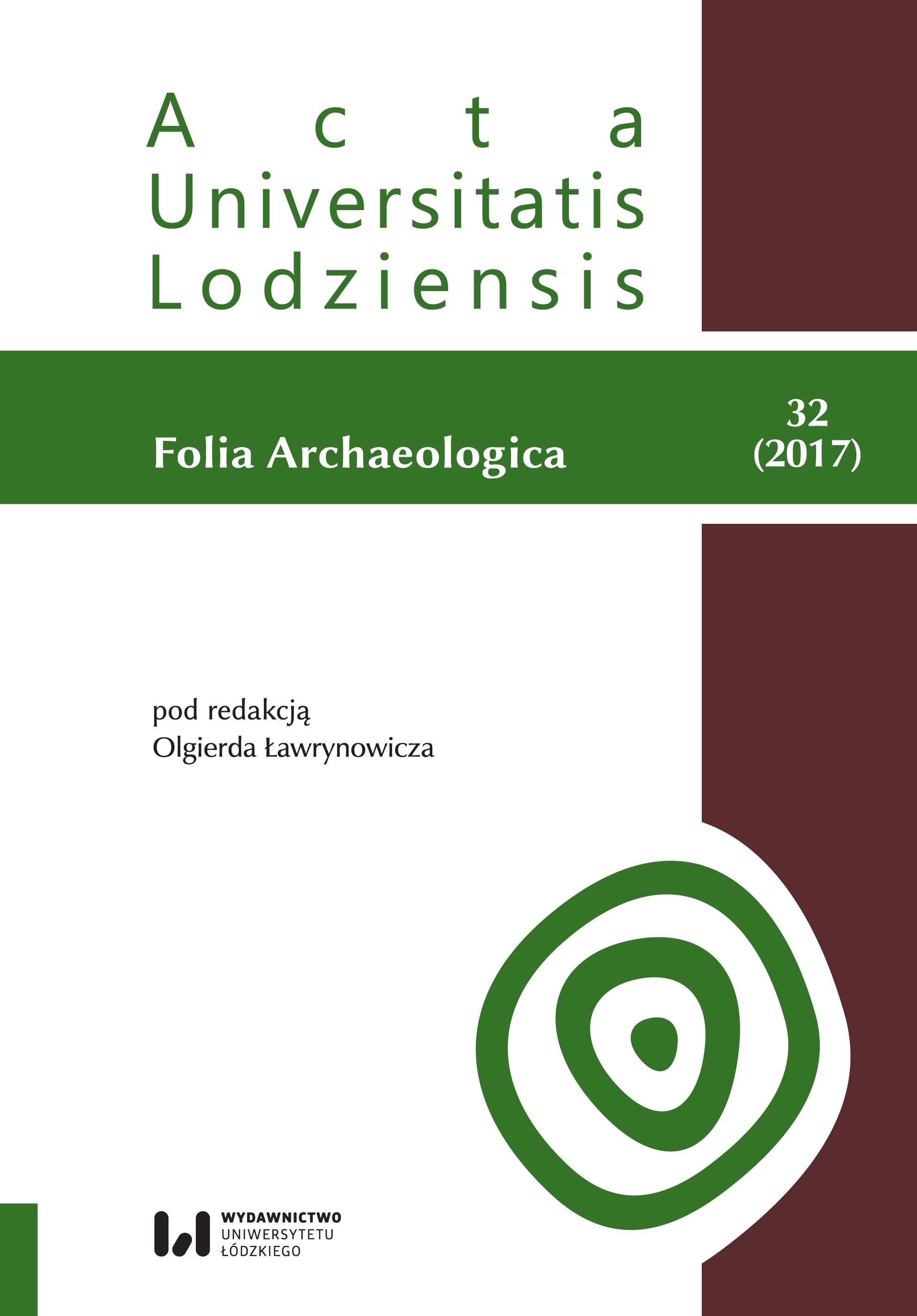Archeologie krajiny ovlivněné výstavbou vodních nádrží
DOI:
https://doi.org/10.18778/0208-6034.32.12Słowa kluczowe:
archeologie současné minulosti, vodní nádrže, zaniklé vesniceAbstrakt
During the 20th century, 43 large water reservoirs were built on the territory of the present Czech Republic. These reservoirs have caused huge changes in cultural landscapes. Large areas have been flooded, many villages and towns have been deserted and many old communication tracts have been broken. There are many sources for studying these abandoned landscapes, such as pictures, photos, movies, old maps and military aerial photos from the 40s and 50s. We can also examine the archaeological relics of former human activities.
This paper describes three examples of archaeological monuments that can be found in the landscapes transformed by water reservoirs. The first one is the ruin of the village of Fláje in the north of Bohemia. This village was founded in the Middle Ages and deserted in the 50s due to the construction of the Fláje water dam. This reservoir destroyed about two-thirds of the village, but also the rest of the settlement was abandoned and destroyed when the drinking water protection zone was established. The field research of this site took place during the reconstruction of the dam when the water level was much lower than usual. That revealed dozens of relicts of demolished houses and other remnants of the deserted village.
Another example is the closed railway between the towns Černá Hůrka and Želnava in the Šumava mountains (southern part of Bohemia). This railway has been closed due to the construction of the largest water reservoir in the Czech Republic Lipno. Parts of the railway (in dry areas) were studied. Long sections of the rail bank with several structures (bridges, crossings, stations) were discovered with the use of old maps and aerial pictures.
The last example describes two concrete bridges of the main Czech highway between the two largest cities in the Czech Republic – Prague and Brno. The construction of the highway began in the 30s, but it was interrupted between the 40s and 60s. Meanwhile, the Želivka water reservoir has been built and it flooded part of the unfinished highway. The bridges of the highway are now abandoned in the middle of the lake.
The Czech landscapes of the large water reservoirs hide many remains of former human activities. Archaeology can provide useful tools for the research of the remains and for a better understanding of the history of those abandoned places.
Pobrania
Bibliografia
Bureš M. (2012), Vesnice zaniklé po roce 1945 a kulturní krajina Novohradských hor, Disertační práce na Katedře archeologie Západočeské univerzity v Plzni.
Google Scholar
Dolanský T. (2004), Lidary a letecké laserové skenování, Univerzita Jana Evangelisty Purkyně v Ústí nad Labem, Ústí nad Labem.
Google Scholar
Firth A. (2010), Marine geophysics: integrated approaches to sensing the seabed, [in:] D. Cowley (ed.), Remote Sensing for Archaeological Heritage Management (= EAC Occasional Paper No. 5), Reykjavík, pp. 131–144.
Google Scholar
Funk L. (2013), Zaniklé osídlení po roce 1945 jako archeologický pramen, Disertační práce na Katedře archeologie Západočeské univerzity v Plzni.
Google Scholar
Joza V. (2002), Plavební kanál Fláje – Clausnitz v Krušných horách (= Der Flössgraben Fleyh – Clausnitz im Erzgebirge), Krušnohorská iniciativa, Mariánské Radčice.
Google Scholar
Kolektiv (1978), Retrospektivní lexikon obcí Československé socialistické republiky 1895–1970. Díl I. Svazek 1. Počet obyvatel a domů podle obcí a částí obcí v letech 1895–1970 podle správního členění k 1. lednu 1972, Federální statistický úřad, Praha.
Google Scholar
Pokorný D., Pešek V., Medunová A. (2006), Voda v ČR do kapsy, Praha, http://www.vitejtenazemi.cz/archiv/voda_cs/voda_cr.pdf (dostupné: 7.03.2017).
Google Scholar
Rebstöck R. (2013), Šumavské koleje, Nakladatelství Dr. Radovan Rebsöck, Sušice.
Google Scholar
Sýkorová J. (2002), Zmizelé domovy – Verschwundene Heimat, Státní okresní archiv Most, Most.
Google Scholar
Váňa M. (2016), Archeologie vesnic zaniklých z důvodu výstavby vodních nádrží, Západočeská univerzita v Plzni, Plzeň.
Google Scholar
Vařeka P., Balý R., Funk L., Galusová L. (2008), Archeologický výzkum vesnic středověkého původu na Tachovsku zaniklých po roce 1945, „Archaeologia Historica” 33, pp. 101–117.
Google Scholar
http://kontaminace.cenia.cz (dostupné: 7.03.2017).
Google Scholar
http://lms.cuzk.cz/lms (dostupné: 7.03.2017).
Google Scholar
http://podvodniarcheologie.cz (dostupné: 7.03.2017).
Google Scholar
http://www.ceskatelevize.cz/porady/873537-hledani-ztraceneho-casu (dostupné: 7.03.2017).
Google Scholar
http://www.dalnice.com (dostupné: 13.07.2017).
Google Scholar
http://www.osac.cz (dostupné: 7.03.2017).
Google Scholar
http://www.willyteam.cz (dostupné: 7.03.2017).
Google Scholar
Pobrania
Opublikowane
Jak cytować
Numer
Dział
Licencja

Utwór dostępny jest na licencji Creative Commons Uznanie autorstwa – Użycie niekomercyjne – Bez utworów zależnych 4.0 Międzynarodowe.












